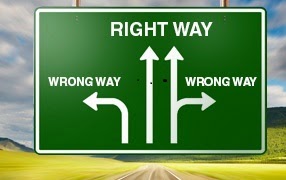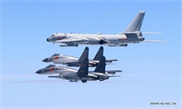GEORGE TOWN: Waves of excitement swept through Penang when the Transport Minister announced that the Bayan Lepas light rail transit (LRT) has received conditional approval.
It is seen as a move to reduce traffic congestion in the city and create a next wave of growth for the state.
The approved 29.9km Bayan Lepas LRT will bring convenience not only to the local folk but also tourists and investors, said Federation of Malaysian Manufacturers Penang chairman Datuk Dr Ooi Eng Hock.
Ooi, who is positive that the project will spur growth on the island, believes the LRT will bring in another wave of development into the state.
“The LRT will divert traffic congestion. It will attract new investments, make life easier for our workforce.
“I believe it will boost the state’s economy with another wave of growth,” he said yesterday.
Following the Transport Ministry’s conditional approval of the project, Ooi added that it is the first step for a change in landscape and behaviour of transport mode in Penang.
Yesterday, the Transport Ministry gave conditional approval to the Bayan Lepas LRT project.
Transport Minister Anthony Loke in a statement said that after a detailed study of the application by Penang Economic Planning Unit (BPEN) to develop the Bayan Lepas LRT project, approval with 30 conditions for the state to comply was given on Tuesday.
Loke said the conditions included a detailed environmental impact assessment (DEIA) approval including traffic, social and heritage assessments.
The state must now exhibit documents on the project for three months, and the final go ahead will only be decided after the public responses are evaluated, said Loke.
“I welcome public participation from the people, NGOs and all stakeholders in this public review.
“The relevant documents are to be exhibited in public places including government offices.
“The state government must also upload a copy of these documents on a website for online viewing.
Penang Chief Minister Chow Kon Yeow thanked the Federal Government and said the state is committed to fulfilling all requirements.
“We will wait for the official letter from Transport Ministry to proceed and initiate public viewing of the documents,” he said.
The RM8.4bil Bayan Lepas LRT together with a monorail, cable cars and water taxis, is part of the state government’s RM46bil Penang Transport Master Plan (PTMP).
This LRT will begin at Komtar in the northeast corner of the island and head south through Jelutong, Gelugor, Bayan Lepas and Penang International Airport, ending at the Penang South Reclamation (PSR) development.
It is expected to provide a fast route to the airport and will traverse densely populated residential, commercial and industrial areas.
https://youtu.be/mdtJqsLapZU/
It is seen as a move to reduce traffic congestion in the city and create a next wave of growth for the state.
The approved 29.9km Bayan Lepas LRT will bring convenience not only to the local folk but also tourists and investors, said Federation of Malaysian Manufacturers Penang chairman Datuk Dr Ooi Eng Hock.
Ooi, who is positive that the project will spur growth on the island, believes the LRT will bring in another wave of development into the state.
“The LRT will divert traffic congestion. It will attract new investments, make life easier for our workforce.
“I believe it will boost the state’s economy with another wave of growth,” he said yesterday.
Following the Transport Ministry’s conditional approval of the project, Ooi added that it is the first step for a change in landscape and behaviour of transport mode in Penang.
Yesterday, the Transport Ministry gave conditional approval to the Bayan Lepas LRT project.
Transport Minister Anthony Loke in a statement said that after a detailed study of the application by Penang Economic Planning Unit (BPEN) to develop the Bayan Lepas LRT project, approval with 30 conditions for the state to comply was given on Tuesday.
Loke said the conditions included a detailed environmental impact assessment (DEIA) approval including traffic, social and heritage assessments.
The state must now exhibit documents on the project for three months, and the final go ahead will only be decided after the public responses are evaluated, said Loke.
“I welcome public participation from the people, NGOs and all stakeholders in this public review.
“The relevant documents are to be exhibited in public places including government offices.
“The state government must also upload a copy of these documents on a website for online viewing.
Penang Chief Minister Chow Kon Yeow thanked the Federal Government and said the state is committed to fulfilling all requirements.
“We will wait for the official letter from Transport Ministry to proceed and initiate public viewing of the documents,” he said.
The RM8.4bil Bayan Lepas LRT together with a monorail, cable cars and water taxis, is part of the state government’s RM46bil Penang Transport Master Plan (PTMP).
This LRT will begin at Komtar in the northeast corner of the island and head south through Jelutong, Gelugor, Bayan Lepas and Penang International Airport, ending at the Penang South Reclamation (PSR) development.
It is expected to provide a fast route to the airport and will traverse densely populated residential, commercial and industrial areas.
Source link
Related posts:
It’s time for Penang to reinvent itself; RM70bil to be raised from the 3 man-made islands to finance LRT, PIL infrastruture under PTMP
Penang all set to make waves as EIA approved, work of second phase of PSR has begun
Penang new Chief Minister taking Penang to the next level
Flat property market seen for Penang
China buyers eyeing Penang property in growing tourism
Boost for Bayan Lepas: Global biz hub for Penang
Hi-tech facility aims at rejuvenating economy in Bayan Lepas
An artist’s impression of the proposed GBS By The Sea project in Bayan Lepas.

























